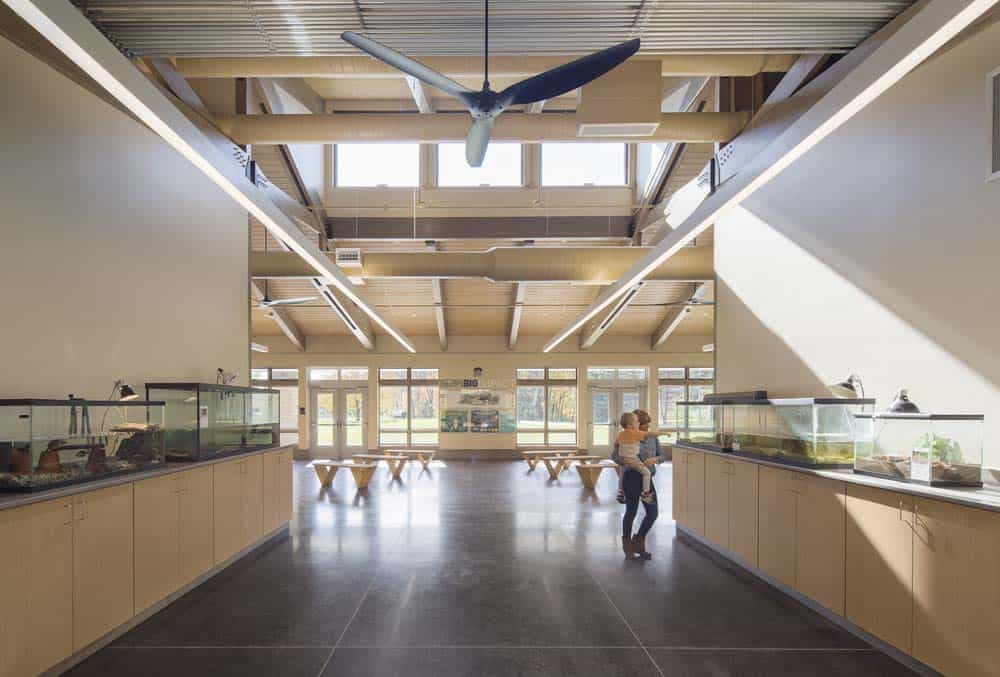Ever since the pandemic has changed our world, there has been a lot of information pertaining to virus spread in the built environment. While a lot of research surrounding the coronavirus is still in development, there are a few critical things that will remain true. Currently, the key components to successfully mitigate virus spread are social distancing, handwashing, cleaning protocols, and proper air quality and ventilation. The design of the built environment around us can aid or hinder these strategies. As architects and engineers, we have been getting a lot of questions lately from clients and partners wanting to know what changes to make in their spaces to help mitigate virus spread, particularly focused around indoor air quality. M+A and leading engineering firm, CMTA, have come together to answer some of the most burning questions.
1. In your expert opinion, how do you think we can reduce the risk of virus spread in the built environment?
M+A: It’s important to note that we can’t eliminate risk, but we can reduce it. Looking at current research, it appears this virus is transmitted mainly through aerosols (virus in droplets expelled when we exhale, talk or cough), which means we have several main ways to reduce our risk:
- Stay away from people who are sick
- Social distance when in public, possibly more than six feet depending on activity and duration (6)
- Wash your hands frequently and don’t touch your face to reduce fomite transmission (9)
- Wear a face mask to reduce exposing others, in case you’re unknowingly an asymptomatic carrier
- Increase fresh air by opening windows or enhance air quality through air purification systems
CMTA: I agree with what M+A has said above. To expand on indoor air quality and the current technologies that exist to reduce the spread, there are several options to consider. The first option is increasing outside air to flush the building as many times as possible during occupied hours. This seems like a “no-brainer,” but there is actually a lot more thought that goes into this than just opening all windows, or outside air dampers in a building. High relative humidity levels can actually encourage the spread of viruses when relative humidity rises above 60%, so it is important to understand what the capabilities of your existing HVAC system are, and what impact that will have on building temperature and relative humidity. The second option is an air purification system that will actively destroy viruses and bacteria both in the air stream and on surfaces within the space(13).
2. Let’s dig a little deeper into air purification technology — What kinds of systems are out there and what would you recommend?
M+A: From a sustainability and a cost perspective, we would recommend bipolar ionization. It has an inexpensive first cost and minimal maintenance over time that can be combined easily with your annual HVAC maintenance. It’s a long-term investment with a short payback.
It’s important to note that most air purification systems do more than just help with our immediate needs mitigating virus spread. Most systems also help reduce VOCs (some Volatile Organic Compounds are known as carcinogens(14)), allergens, mold, and odors. Air quality is one of the key factors in making a space healthier for the occupants(12) — we can think more clearly and be more creative and productive, students achieve higher test scores, and patients recover faster. If there’s one key component of a healthy building to invest in, it’s air quality. Following the 3-30-300 rule(7), if companies spend $3 in utilities, $30 in rent, and $300 in payroll per square foot per year, investing in creating a healthier and happier workforce offers a significantly higher payback.
You can read more from the original source : http://www.ma-architects.com/news-plus-insights/articles/take-a-deep-breath-weve-got-you-covered
MSD, Inc is proud to find articles that we can share with you. If you have any questions please feel free to reach out at 937-254-3235



